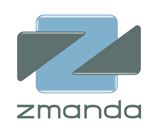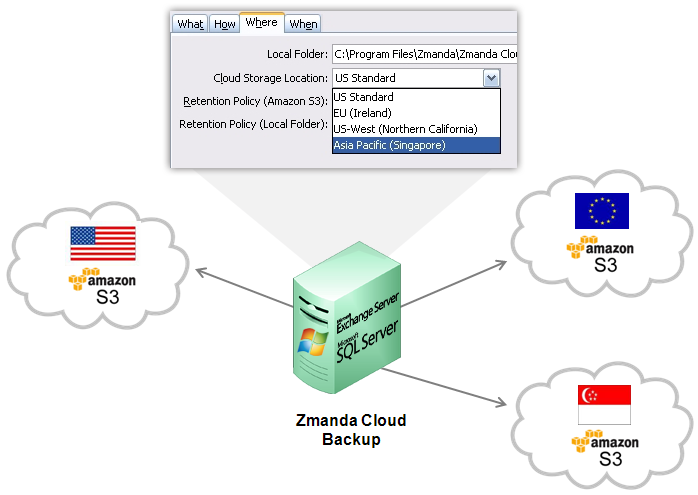Second installment in a series of posts about recent work on Amanda.
 The Application API allows Amanda to back up structured data — data that cannot be handled well by dump or tar. Most databases fall into this category, and with the 3.1 release, Amanda Community Edition ships with ampgsql, which supports backing up Postgres databases using the software’s point-in-time recovery mechanism.
The Application API allows Amanda to back up structured data — data that cannot be handled well by dump or tar. Most databases fall into this category, and with the 3.1 release, Amanda Community Edition ships with ampgsql, which supports backing up Postgres databases using the software’s point-in-time recovery mechanism.
The how-to for this application is on the Amanda wiki.
Operation
Postgres, like most “advanced” databases, uses a logging system to ensure consistency even in the face of (some) hardware failures. In essence, it writes every change that it makes to the database to the logfile before changing the database itself. This is similar to the operation of logging filesystems. The idea is that, in the face of a failure, you just replay the log to re-apply any potentially corrupted changes.
Postgres calls its log files WAL (write-ahead log) files. By default, they are 16MB. Postgres runs a shell command to “archive” each logfile when it is full.
So there are two things to back up: the data itself, which can be quite large, and the logfiles. A full backup works like this:
- Execute PG_START_BACKUP(ident) with some unique identifier.
- Dump the data directory, excluding the active WAL logs. Note that the database is still in operation at this point, so the dumped data, taken alone, will be inconsistent.
- Execute PG_STOP_BACKUP(). This archives a text file with the suffix .backup that indicates which WAL files are needed to make the dumped data consistent again.
- Dump the required WAL files
An incremental backup, on the other hand, only requires backing up the already-archived WAL files.
A restore is still a manual operation — a DBA would usually want to perform a restore very carefully. The process is described on the wiki page linked above, but boils down to restoring the data directory and the necessary WAL files, then providing postgres with a shell command to “pull” the WAL files it wants. When postgres next starts up, it will automatically enter recovery mode and replay the WAL files as necessary.
Quiet Databases
On older Postgres versions, making a full backup of a quiet database is actually impossible. After PG_STOP_BACKUP() is invoked, the final WAL file required to reconstruct a consistent database is still “in progress” and thus not archived yet. Since the database is quiet, postgres does not get any closer to archiving that WAL file, and the database hangs (or, in the case of ampgsql, times out).
Newer versions of Postgres do the obvious thing: PG_STOP_BACKUP() “forces” an early archiving of the current WAL file.
The best solution for older versions is to make sure transactions are being committed to the database all the time. If the database is truly silent during the dump (perhaps it is only accessed during working hours), then this may mean writing garbage rows to a throwaway table:
CREATE TABLE push_wal AS SELECT * FROM GENERATE_SERIES(1, 500000);
DROP TABLE push_wal;
Note that using CREATE TEMPORARY TABLE will not work, as temporary tables are not written to the WAL file.
As a brief encounter in #postgres taught me, another option is to upgrade to a more modern version of Postgres!
Log Incremental Backups
DBAs and backup admins generally want to avoid making frequent full backups, since they’re so large. The usual pattern is to make a full backup and then dump the archived log files on a nightly basis for a week or two. As the log files are dumped, they can be deleted from the database server, saving considerable space.
In Amanda terms, each of these dumps is an incremental, and is based on the previous night’s backup. That means that the dump after the full is level 1, the next is level 2, and so on. Amanda currently supports 99 levels, but this limit is fairly arbitrary and can be increased as necessary.
The problem in ampgsql, as implemented, is that it allows Amanda to schedule incremental levels however it likes. Amanda considers a level-n backup to be everything that has changed since the last level-n-1 backup. This works great for GNU tar, but not so well for Postgres. Consider the following schedule:
| Monday |
level 0 |
| Tuesday |
level 1 |
| Wednesday |
level 2 |
| Thursday |
level 1 |
The problem is that the dump on Thursday, as a level 1, needs to capture all changes since the previous level 0, on Monday. That means that it must contain all WAL files archived since Monday, so those WAL files must remain on the database server until Thursday.
The fix to this is to only perform level 0 or level n+1 dumps, where n is the level of the last dump performed. In the example above, this means either a level 0 or level 3 dump on Thursday. A level 0 is a full backup and requires no history. A level 3 would only contain WAL files archived since the level 2 dump on Wednesday, so any WAL files before that could be deleted from the database server.
Summary
The combination of a powerful open source database system and the open source ampgsql plugin combine to produce a powerful protected storage system for your mission-critical data. We will continue to develop additional Application API plugins, and encourage you and other members of the community to do the same!










 The Application API allows Amanda to back up structured data — data that cannot be handled well by dump or tar. Most databases fall into this category, and with the 3.1 release, Amanda Community Edition ships with
The Application API allows Amanda to back up structured data — data that cannot be handled well by dump or tar. Most databases fall into this category, and with the 3.1 release, Amanda Community Edition ships with  Among open-source applications, Amanda is known for being stable and highly reliable. To ensure that Amanda lives up to this reputation, we’ve constructed an automated testing framework (using
Among open-source applications, Amanda is known for being stable and highly reliable. To ensure that Amanda lives up to this reputation, we’ve constructed an automated testing framework (using 
 You need to pick the right components to implement a scalable, robust and secure backup server. The choice of the operating system has crucial implications. Red Hat Enterprise Linux (RHEL) provides many of the features needed from an ideal OS for a backup server. Some of these include:
You need to pick the right components to implement a scalable, robust and secure backup server. The choice of the operating system has crucial implications. Red Hat Enterprise Linux (RHEL) provides many of the features needed from an ideal OS for a backup server. Some of these include: